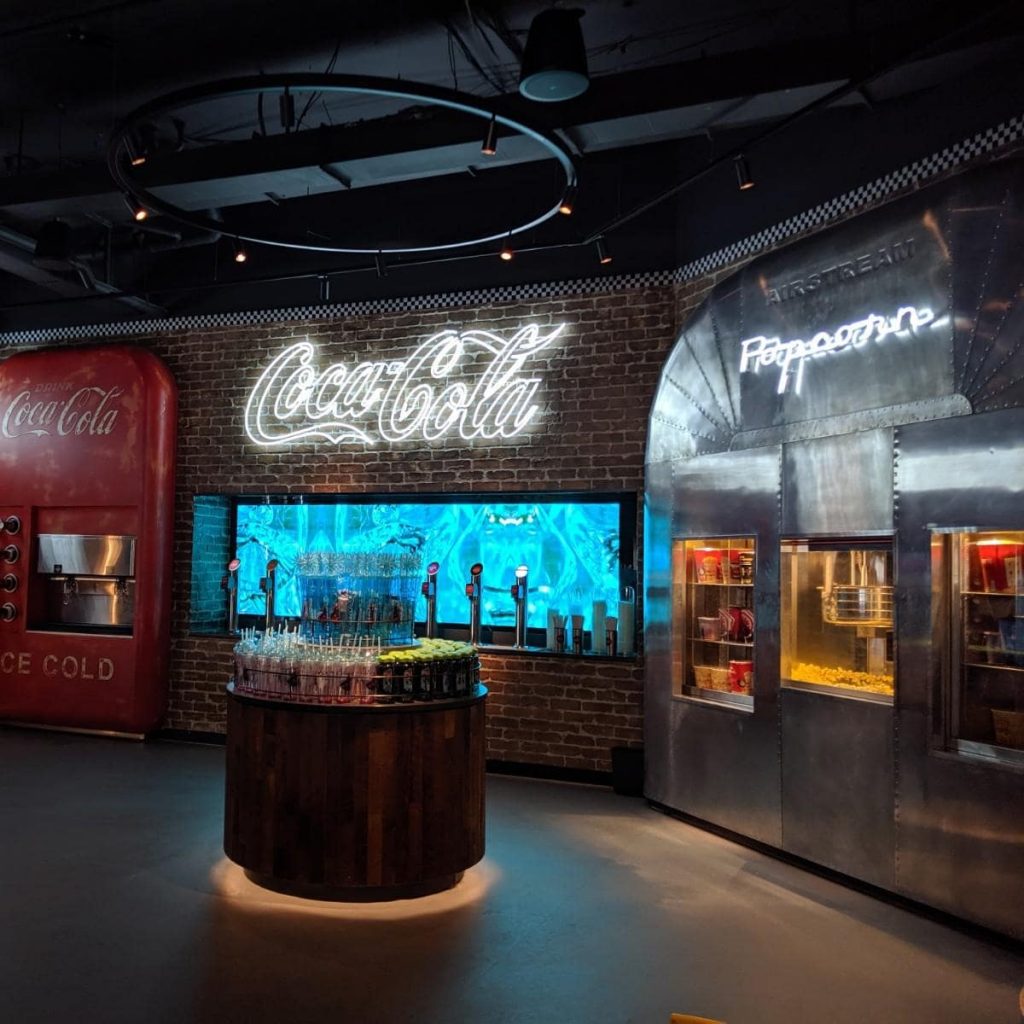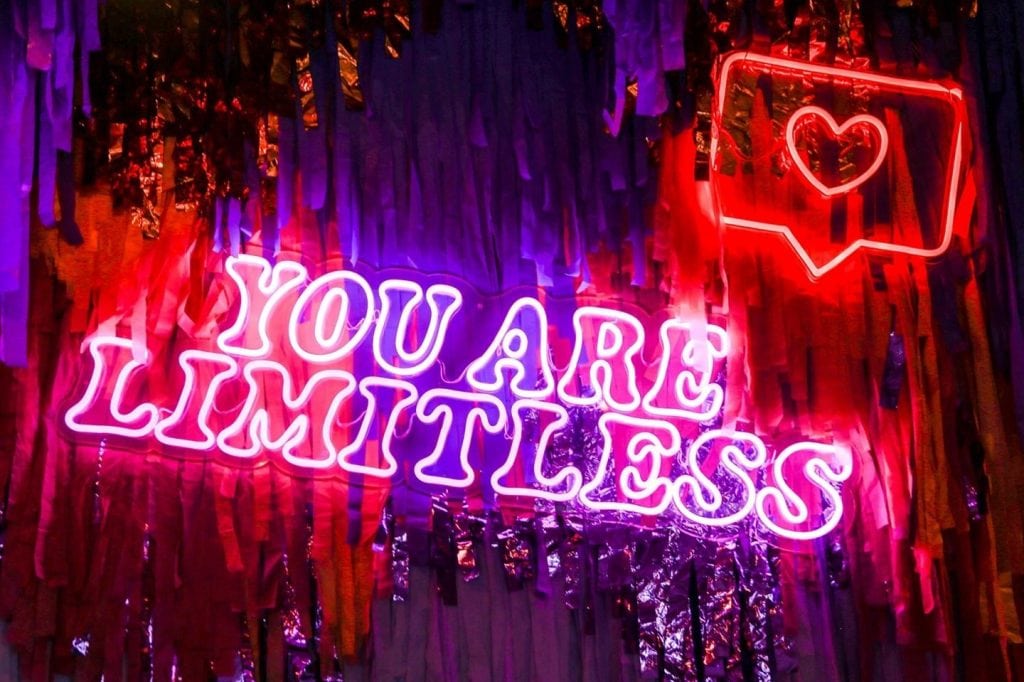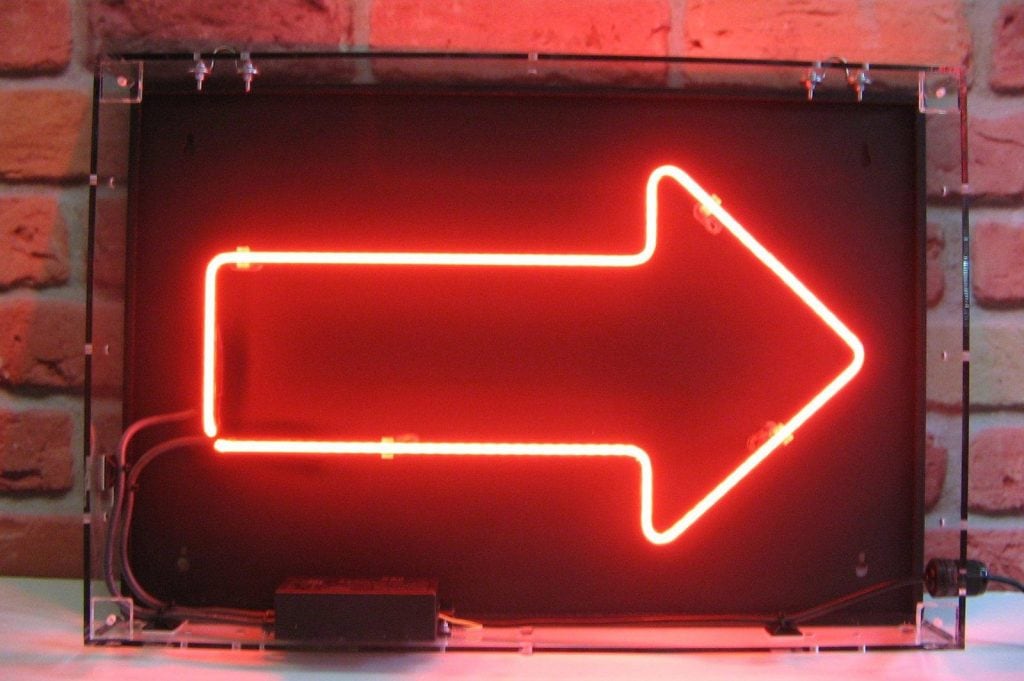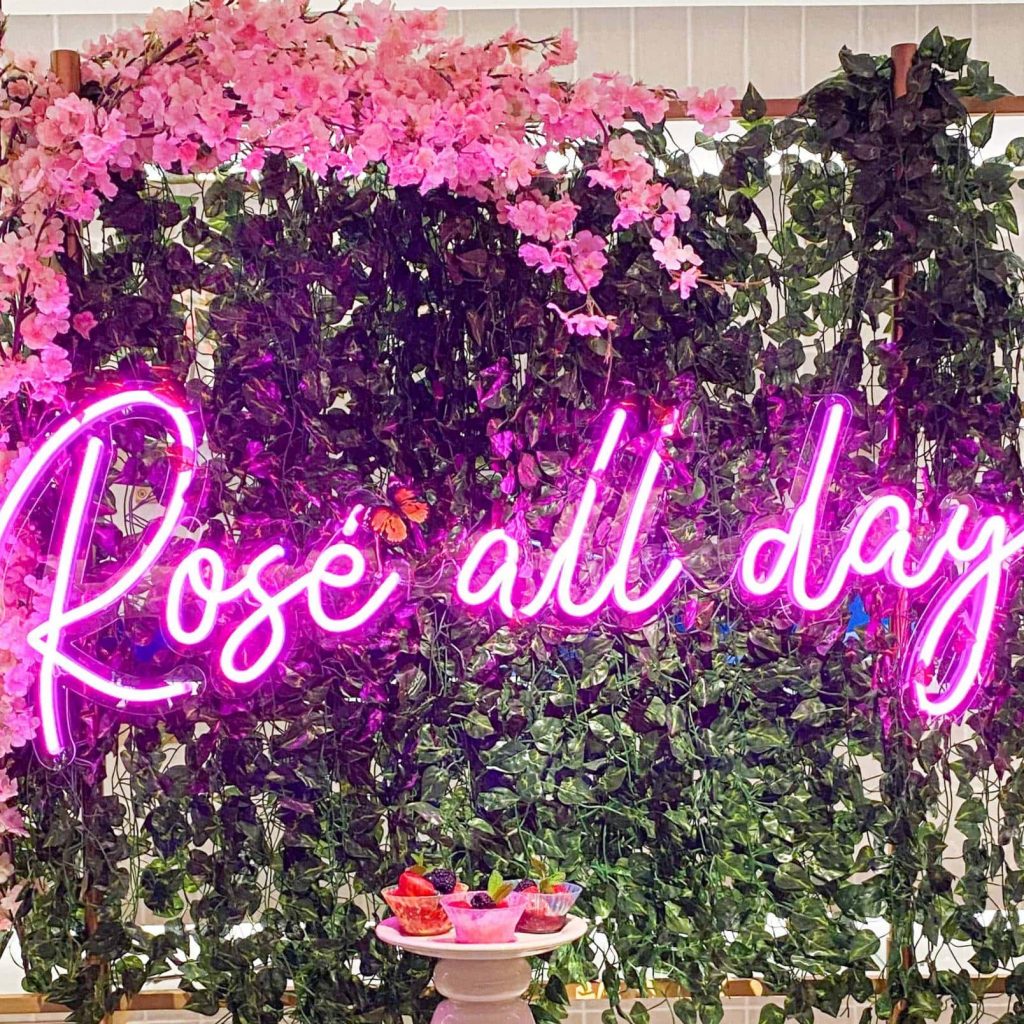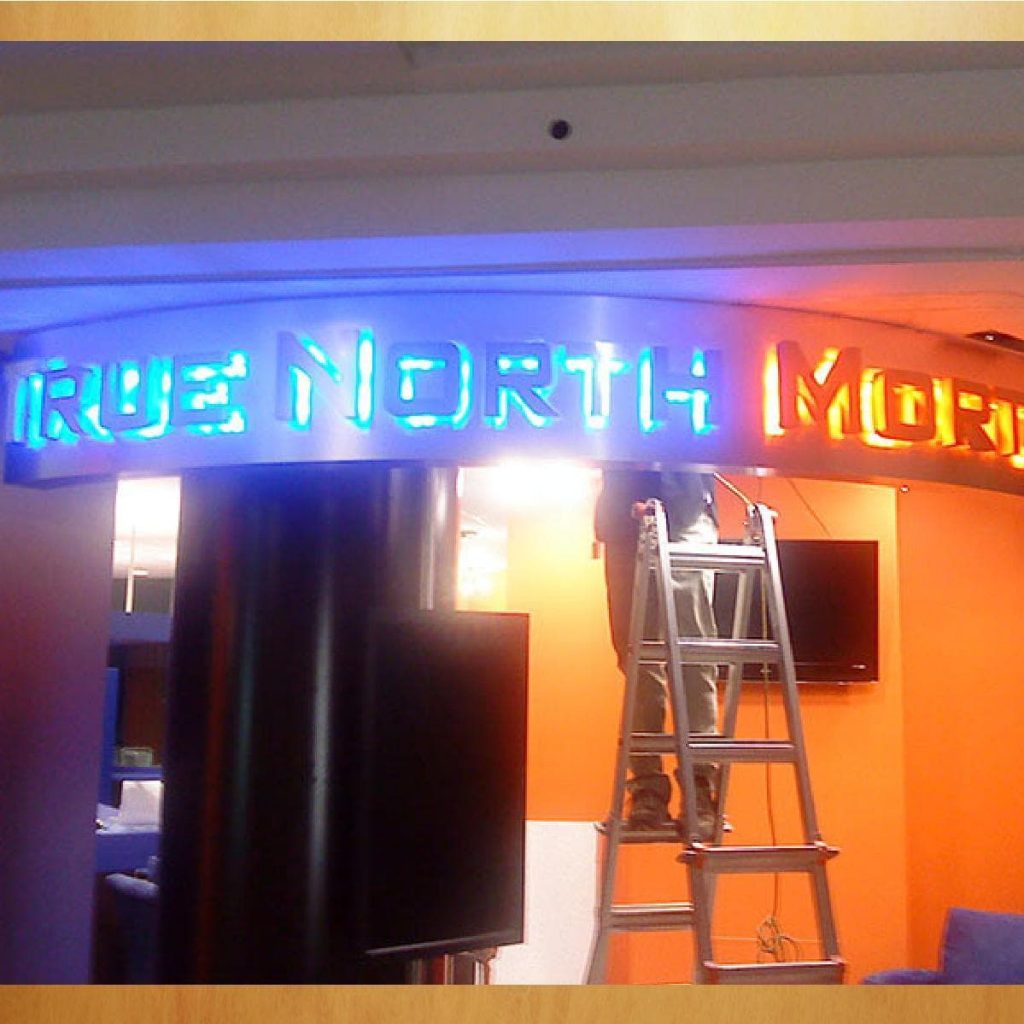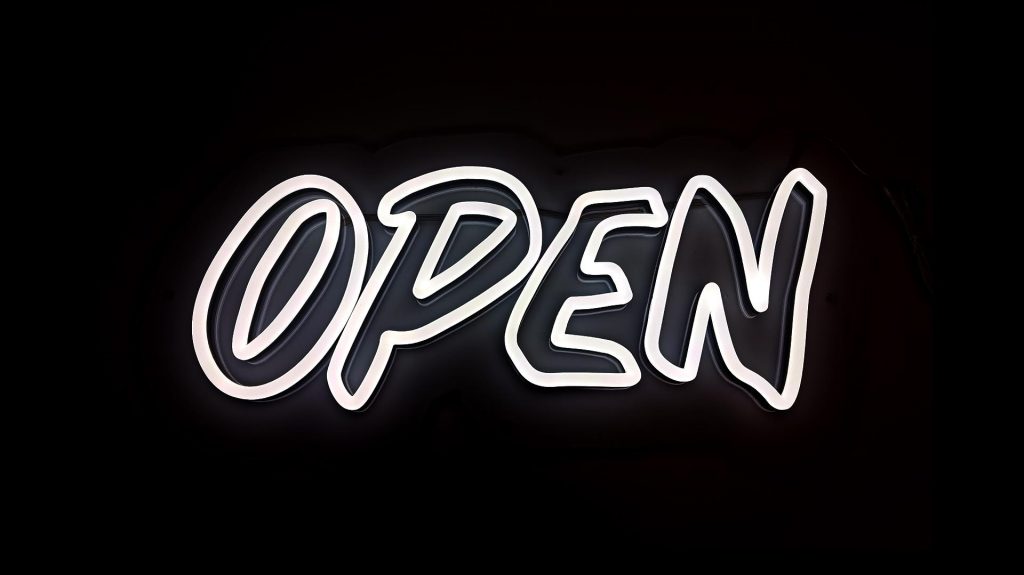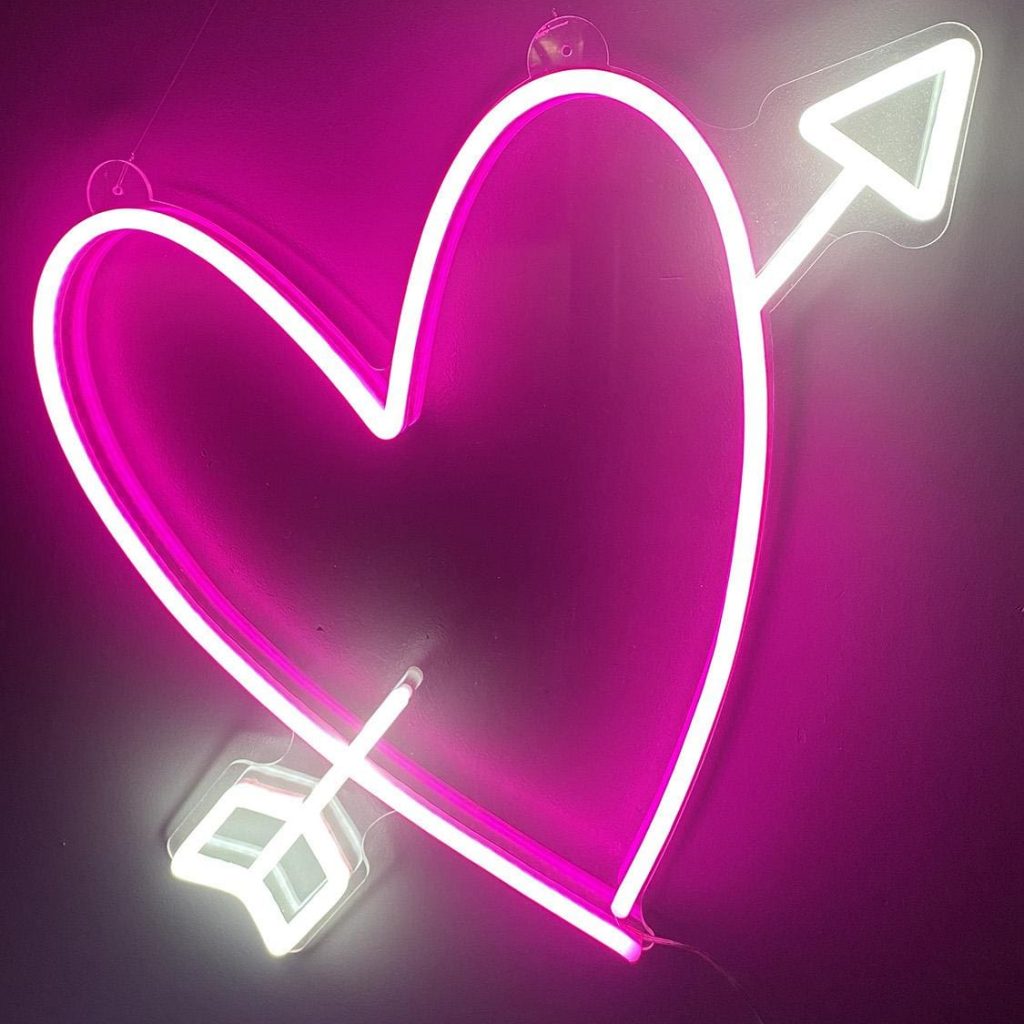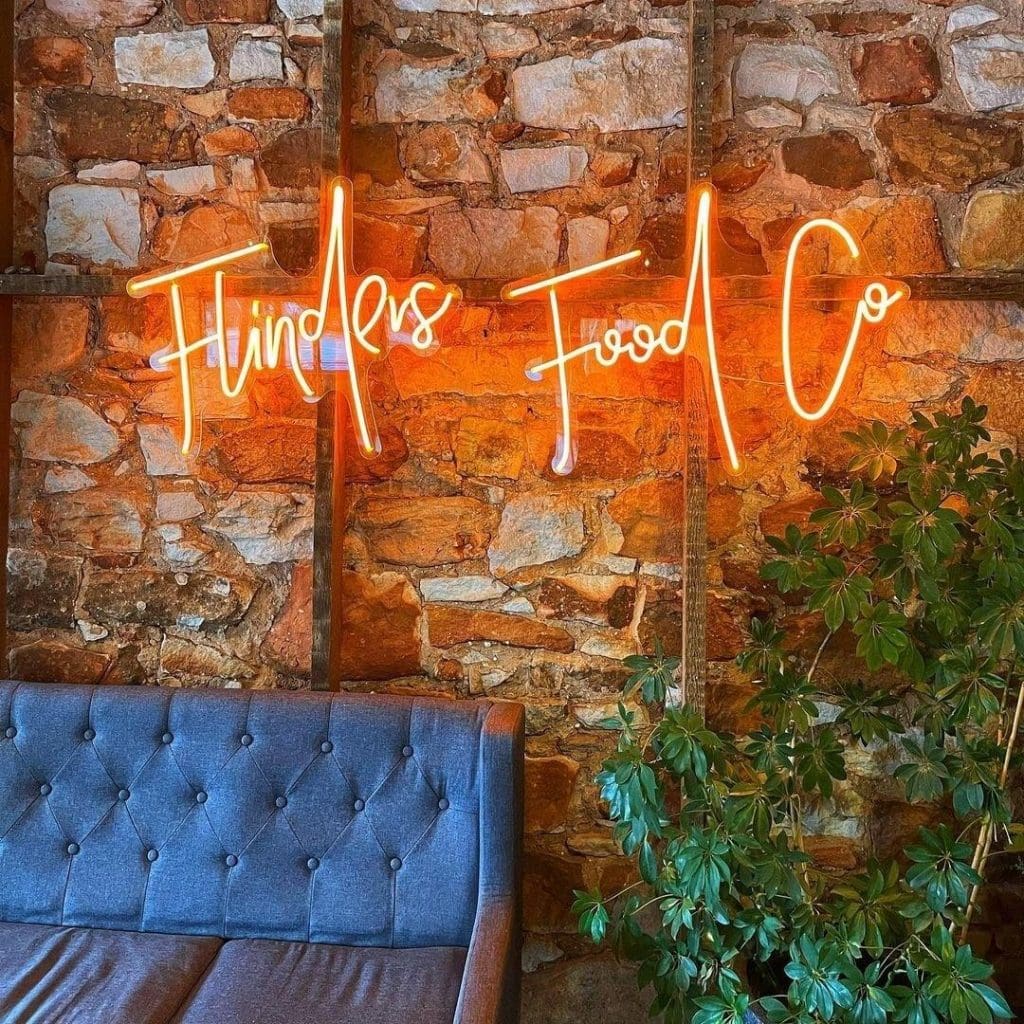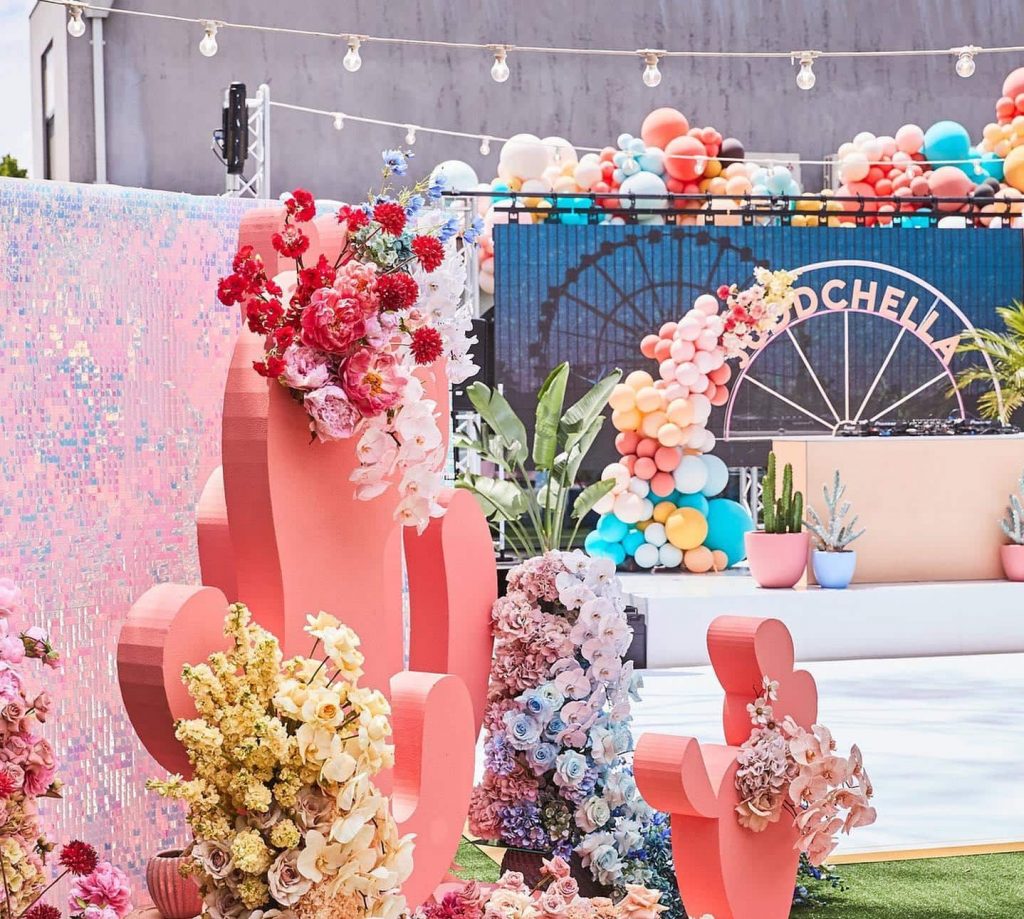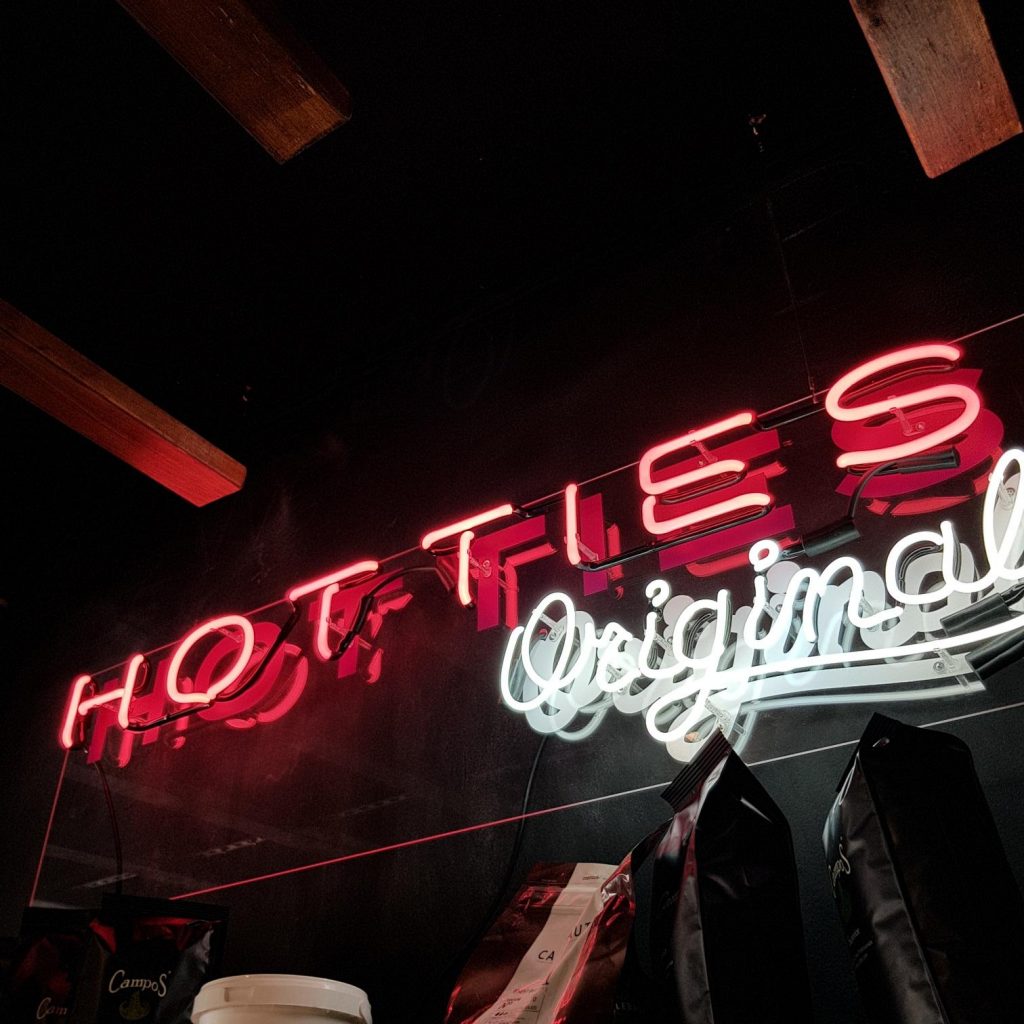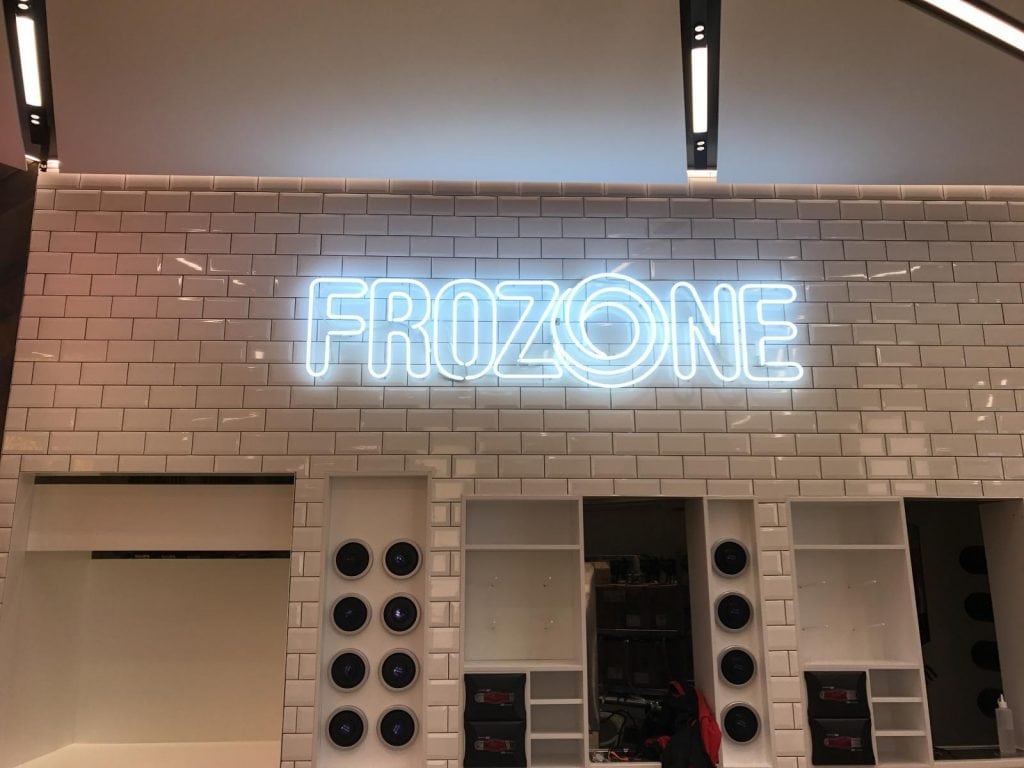Nearly a century after its introduction, brightly coloured neon signs remain a mainstay of contemporary illumination. The range of options for personalisation and expression is practically infinite, from traditional red and green neon tubes to the most cutting-edge LED neon signs in every colour of the rainbow.
But how do they get all those different hues in neon lights? Here we will discuss the science behind making neon colours and the various techniques utilised to create these vibrant works of art.
In the past, neon signs were made with neon gas, which, when energised, gave forth a brilliant red glow.
The hue of the light emitted from the sign, however, can be changed by introducing different gases or components, such as argon, helium, or mercury. The term "spectral tuning" describes this procedure.
LED neon signs, which can be programmed to change colour, flash, and display animations, have recently emerged, expanding the palette of possible sign colours and allowing for more creative freedom in their layout and design.
Neon signs are a visually striking way to communicate and transmit messages, and have been utilised for everything from business logos to creative expressions.
We can better appreciate the artistry and technical talent required to make a neon sign if we know the many processes and procedures utilised to produce the neon hues.
Relax, because you're about to enter the exciting world of neon colour mixing.
How Do Neon Signs Work?
Neon signs are instantly recognisable due to their distinctive design and the vivid colours they emit.
But have you ever thought about how neon signs really function? In this piece, we'll explore the science underlying neon lighting and break down the process by which these signs generate their distinctive glow.
A neon sign consists of a glass tube filled with neon gas and another gas, like argon or mercury, in varying concentrations to provide the desired hue. After that, the tube is sealed, and wires are attached.
The gas inside the tube is ionised when a high voltage current is passed through the circuit, and this causes the gas to emit light. The gas utilised in the tube determines the hue of the light emitted.
Gas discharge is the underlying technology of neon signs. Free electrons are produced when an electrical current is passed through the gas in the tube, causing the gas to become ionised. When these liberated electrons hit gas atoms, they set off a chain reaction that results in the emission of light. The characteristics of the emitted light depend on the specific gas utilised in the tube and the voltage applied.
Neon signs employ a unique type of glass tube that is engineered to safely confine the gas and shield the electronics.
To form the tube into the required configuration, a technique known as "tubing bending" is used to work with a clear, heat-resistant glass rod. In this way, anything from straightforward tubes to elaborately curved signs can be manufactured.
Neon signs, which use gas discharge and electrical current to create their characteristic glow, are an interesting and distinctive type of artificial illumination. These signs, which are lit by a combination of gas inside a glass tube and an electrical circuit, have been fascinating viewers for more than a century and continue to be a well-liked option for both purposes.
How Do Neon Signs Have Different Colors?
Neon signs get their vibrant hues from the interaction between the type of gas utilised in the tube and the strength of the electrical current running through the circuit. Neon, argon, helium, and mercury are only a few of the gases or components used to produce a wide range of colours in conventional neon signs. The term "spectral tuning" describes this procedure.
The gas inside the tube becomes ionised when a high voltage current is passed through it, resulting in luminescence. Both the type of gas utilised in the tube and the strength of the electrical current determine the hue of the resulting light.
To give you an idea, neon gas emits a brilliant red light, while argon emits a dimmer blue light.
LED neon signs have recently emerged, expanding the colour palette and creative potential of neon signs.
Instead of neon gas, LED neon signs employ light-emitting diodes (LEDs). To produce a larger spectrum of colours, the voltage provided to the circuit can be changed to affect how the LEDs light up.
So, whether you want a traditional neon red sign or a multicoloured LED neon sign, the production procedure is identical. Neon signs are a popular and adaptable option for lighting and decoration because they can produce an infinite variety of colours and designs by combining the correct sort of gas or materials and managing the energy of the electrical current.
What are the Different Colors can be made in a Neon Sign?
The traditional neon sign colour is red, but other hues, including blue, green, and pink, are possible with neon lighting.
In neon signs, the hues created by the glowing gas inside the tube or the light emitting diodes (LEDs) in an LED neon sign determine the sign's message.
Neon signs of yore used various gases or components to create a variety of hues.
To give you an idea, neon gas emits a brilliant red light, while argon emits a dimmer blue light. The light from helium is more of a yellowish green, while the light from mercury is more of a blueish green. By combining them in various ways, you can make hues like pink and orange.
Changing the voltage in an LED neon sign's circuit results in a variety of hues.
Instead of using gas-filled tubes, light-emitting diodes (LEDs) are used in LED neon signs, and the voltage may be adjusted to change the hue of the light. This paves the way for the creation of a larger spectrum of hues, such as various tones of red, blue, green, yellow, pink, and purple.
Therefore, whether you want a traditional neon sign in red or a multicoloured LED sign, the colour combinations are practically endless. There is a hue available for any purpose, whether it's to add a splash of colour to a neutral environment or to create a dramatic statement with a glowing neon sign.
Red Neon Sign
Red neon signs have several uses and can be used in many different contexts. Red neon signs are frequently seen in the following settings:
- Red neon signs are a common way for bars and nightclubs to project an upbeat and exciting vibe to its patrons. Any bar or nightclub can benefit from the classic elegance that a red neon sign can bring.
- In order to create a cosy and welcoming ambience, red neon signs are frequently utilised in restaurants. Promoting your restaurant or advertising limited-time menu items with a bright red neon sign is a certain way to pull in customers.
- Storefronts can benefit from the striking visual impact of red neon signs. A red neon sign is perfect for drawing attention to a deal, highlighting a new product, or simply brightening up your store's interior.
- When it comes to interior design, red neon signs are a great way to inject some energy and energy into your home. To make a bold statement in the living room or inject some much-needed colour into the bedroom, a red neon sign might be an excellent choice.
- Red neon signage can be used to advertise vehicle repair firms and draw in clients. A dramatic statement may be made and customers can be attracted to your store with the help of a brilliant red neon sign.

Red neon signs are adaptable, and may be utilised in a number of different contexts to add a welcoming, lively, and attention-grabbing element. A red neon sign is an excellent alternative for advertising your business or simply adding some flair to your interior design.
Blue Neon Sign
Depending on the setting and intended message, blue neon signs can serve many functions. Blue neon signs are frequently seen in the following settings:
- For a more relaxed and businesslike vibe in the office, blue neon signs are a great choice. Putting up a blue neon sign in the lobby or conference room is a quick and easy way to make the space feel more professional.
- Blue neon signs can be utilised to great effect in healthcare settings, such as hospitals, to help patients feel more at ease. The soothing blue glow can improve the mood of both patients and visitors.
- Blue neon signs can be utilised to provide a striking and memorable display at a retail establishment. A blue neon sign is perfect for drawing attention to a deal, highlighting a new product, or simply brightening up your store's interior.
- Blue neon signs are a great way to inject some life into your home's décor. A blue neon sign can be a terrific way to make a statement in your living room or give some much-needed colour to your bedroom.
- If you're trying to convey a sense of the cutting edge and the future in your tech or innovation company, blue neon signs are the way to go. Companies can market their brand and establish a reputation for innovation and originality with the help of the soothing blue light.
The cool professionalism and striking visual appeal of blue neon signs make them ideal for a wide range of venues. A blue neon sign can be used to advertise a business or simply to bring some vibrancy to a room.
Yellow Neon Sign
The bright yellow glow of neon signs has many applications. In many situations, yellow neon signs are utilised, including the following:
- Yellow neon signage can be utilised to create a friendly and welcoming ambience in eating establishments. A yellow neon sign can serve several purposes, including advertising sales and serving as a kind greeting to clients.
- Convenience stores can employ yellow neon signage to draw customers' attention with a bold and eye-catching display. Whether you're trying to sell more food, beverages, or something else, a bright yellow neon sign will help get the word out.
- There is no better way to create a warm and welcoming environment for students and faculty than with bright yellow neon signs. The energetic and upbeat vibe that the yellow light can provide to a classroom is well-documented.
- Decorate your home with a pop of colour using yellow neon signage. Yellow neon signs are eye-catching and may be used anywhere from the living room to the bedroom.
- Garages and auto shops can benefit from the eye-catching nature of yellow neon signs. A yellow neon sign can be used for both service advertising and to create a friendly atmosphere for clients.
A warm, cheerful, and welcoming atmosphere may be created with the help of yellow neon signs, which can be utilised in a number of different contexts. A bright yellow neon sign may do wonders for your business's visibility or as a decorative accent in your house.
Pink Neon Sign
There is no one right place for a pink neon sign, and its versatility makes it useful in many situations. Pink neon signs are frequently seen in the following settings:
- Atmosphere-creating pink neon signs are ideal for usage in spas and beauty salons, where they contribute to a soft, calming vibe. A pink neon sign is perfect for attracting attention to your business or service, or for setting the mood and making consumers feel at ease.
- Pink neon signs can be used to create a fun and upbeat ambience in girls' bedrooms. A pink neon sign is perfect for either subtly introducing colour or making a bold visual statement.
- Storefronts: Pink neon signs are eye-catching and can draw customers' attention in a crowded shopping mall. A pink neon sign can be used to promote a deal on anything from clothing and accessories to furniture and more.
- Pink neon signs are a great way to show support and bring attention to Breast Cancer Awareness activities. The optimistic and upbeat vibes of the brilliant pink light may help any room feel more like home.
- Pink neon signs are not only an eye-catching form of outdoor lighting, but they can also be employed as an elegant accent piece inside the home. A pink neon sign may be a striking addition to your home, whether you want to make a bold statement in the living room or just add a splash of colour to your bedroom.
Feminine, vibrant, and soothing, pink neon signs can be employed in a variety of locations. A pink neon sign can serve as a means of advertising, a symbol of encouragement, or a fun splash of colour in any setting.
Conclusion
Modern illumination is often provided by neon signs, which can be customised in a variety of ways. Neon gas is used to create them because of its bright red light, but the colour of the light can be altered by adding other gases or components. More sign colours are now available to choose from, and there is more leeway in terms of sign layout and design thanks to the advent of LED neon signs, which can be programmed to change colour, flash, and display animations.
From company logos to artistic expressions, neon signs have been used for their eye-catching visual impact. The use of gas discharge and electrical current to create a distinctive glow, neon signs are a fascinating and unique form of artificial illumination.
They use a special glass tube designed to keep the gas inside and protect the electronics. By passing a high voltage current through the tube, the gas inside is ionised, making it glow brightly. Recently developed LED neon signs have broadened the range of neon sign colours and design options.
As the circuit's input voltage is adjusted, the LEDs' illumination can be modified. Because the right mixture of gas or materials and control of electrical current can produce an infinite variety of colours and designs, neon signs are a popular and versatile choice for lighting and decoration.
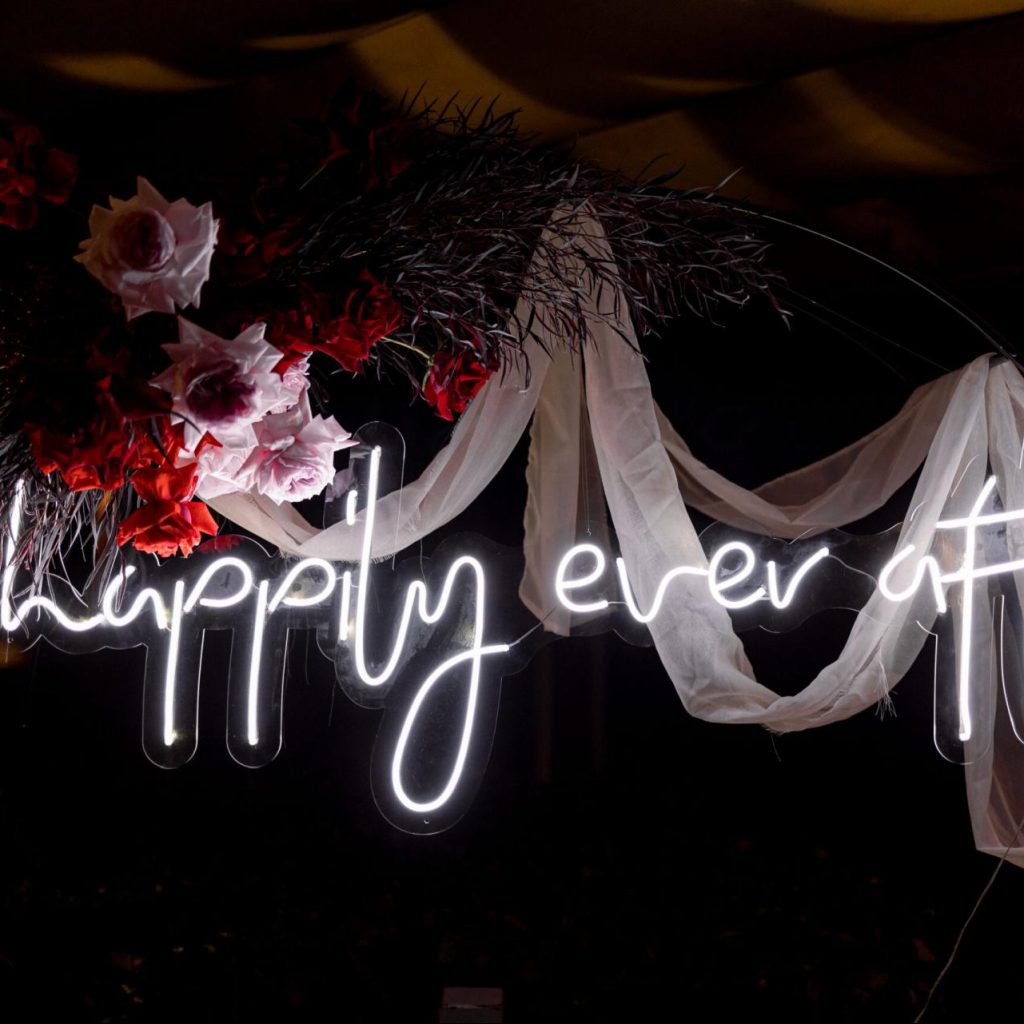
Despite red being the most common neon sign colour, other colours are possible with this type of lighting. The use of light-emitting diodes (LEDs) in LED neon signs enables a wider range of colours to be produced. Red neon signs can serve multiple purposes and be implemented in various settings. Nightclubs and bars often use flashy red neon signs to attract customers with a sense of excitement and energy. As an added bonus, they can also be found in restaurants, where they help set a warm and inviting mood, and in stores, where they help promote sales, draw attention to new products, and brighten the store's exterior.
Content Summary
- Here we will discuss the science behind making neon colours and the various techniques utilised to create these vibrant works of art.
- In the past, neon signs were made with neon gas, which, when energised, gave forth a brilliant red glow.
- The hue of the light emitted from the sign, however, can be changed by introducing different gases or components, such as argon, helium, or mercury.
- Neon signs are a visually striking way to communicate and transmit messages, and have been utilised for everything from business logos to creative expressions.
- Neon signs, which use gas discharge and electrical current to create their characteristic glow, are an interesting and distinctive type of artificial illumination.
- These signs, which are lit by a combination of gas inside a glass tube and an electrical circuit, have been fascinating viewers for more than a century and continue to be a well-liked option for both purposes.
- Instead of neon gas, LED neon signs employ light-emitting diodes (LEDs).
- So, whether you want a traditional neon red sign or a multicoloured LED neon sign, the production procedure is identical.
- The traditional neon sign colour is red, but other hues, including blue, green, and pink, are possible with neon lighting.
- Neon signs of yore used various gases or components to create a variety of hues.
- Changing the voltage in an LED neon sign's circuit results in a variety of hues.
- Instead of using gas-filled tubes, light-emitting diodes (LEDs) are used in LED neon signs, and the voltage may be adjusted to change the hue of the light.
- Therefore, whether you want a traditional neon sign in red or a multicoloured LED sign, the colour combinations are practically endless.
- Any bar or nightclub can benefit from the classic elegance that a red neon sign can bring.
- In order to create a cosy and welcoming ambience, red neon signs are frequently utilised in restaurants.
- Storefronts can benefit from the striking visual impact of red neon signs.
- When it comes to interior design, red neon signs are a great way to inject some energy and energy into your home.
- A red neon sign is an excellent alternative for advertising your business or simply adding some flair to your interior design.
- Depending on the setting and intended message, blue neon signs can serve many functions.
- For a more relaxed and businesslike vibe in the office, blue neon signs are a great choice.
- Putting up a blue neon sign in the lobby or conference room is a quick and easy way to make the space feel more professional.
- Blue neon signs can be utilised to provide a striking and memorable display at a retail establishment.
- Blue neon signs are a great way to inject some life into your home's décor.
- The bright yellow glow of neon signs has many applications.
- In many situations, yellow neon signs are utilised, including the following:
- Yellow neon signage can be utilised to create a friendly and welcoming ambience in eating establishments.
- Decorate your home with a pop of colour using yellow neon signage.
- There is no one right place for a pink neon sign, and its versatility makes it useful in many situations.
- A pink neon sign may be a striking addition to your home, whether you want to make a bold statement in the living room or just add a splash of colour to your bedroom.
- Feminine, vibrant, and soothing, pink neon signs can be employed in a variety of locations.
- A pink neon sign can serve as a means of advertising, a symbol of encouragement, or a fun splash of colour in any setting.
FAQs About LED Neon Signs
While the average lifespan of a neon sign is eight to fifteen years, many of them last much longer than that. A sign's lifespan can be shortened by leaving it on for extended periods of time, and it also increases the risk of overheating and electrical surge damage
Neon signs, which were common from the 1920s to the 1960s and again in the 1980s, require them to create the bright, eye-catching displays of colour that are their hallmark.
The neon glass tubes in the metal conduits are linked together by high-voltage electrical wires. When temperatures get too high, the wires powering the sign can melt, rendering it useless in whole or in part.
Believe it or not, no electricity is required here, despite the fact that many people think they must plug it in. When excited by either electricity or ultraviolet light, gas molecules release electrons, causing the gas to glow.
Neon signs are stunning to behold, but they pose a danger if they aren't regularly serviced. Injury from shattered glass, electric shock, or a fire hazard are all examples of the dangers that could arise.


